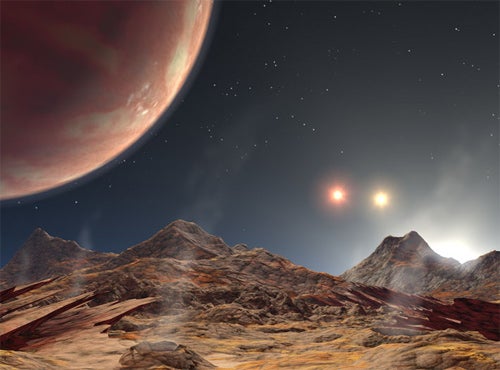Movie buffs may remember Luke Skywalker gazing at a pair of setting suns during Star Wars: A New Hope. Did filmmaker George Lucas apply artistic license by creating an improbable horizon? With the discovery of a new exoplanet, it appears Lucas exercised restraint by limiting the scene to 2 suns.
Using the High Resolution Echelle Spectrometer on the 10-meter Keck Telescope atop Mauna Kea, Hawaii, Konacki took an initial spectrum of this system in August 2003. Konacki’s survey measured velocities of bodies in close-binary and close-multiple-star systems. After looking at the HD 188753 system, Konacki suspected a planet was present, and it was revealed during an examination of the data last fall.
Planetary scientists are excited about this discovery because it raises questions about planet formation and planet-sun relationships.
“If we believe that the same basic processes lead to the formation of planets around single stars and components of multiple stellar systems, then such processes should be equally feasible, regardless of the presence of stellar companions,” explains Konacki. “Planets from complicated stellar systems will put our theories of planet formation to a strict test.”
Maciej Konacki’s report on the HD 188753 system appears in the July 14 Nature.










